Released: 3rd August 1992
Re-release: 4th December 1995
Writers: James Harris III / Terry Lewis / Michael Bivins / Ronnie DeVoe
Peak position: #2
Chart run: 7-4-2-2-4-6-9-12-15-18-31-45-68
Chart run (1995): 7-16-20-25-30-47-62
Billboard Hot 100 chart run: 24-19-10-10-10-11-14-14-15-17-19-20-18-21-22-27-28-39-43-41
The Best Things In Life Are Free brought Luther Vandross and Janet Jackson together in 1992 for a soundtrack single which proved so enduringly popular that it was a hit twice in the UK.

Although The Best Things In Life Are Free has arguably transcended to become more famous than the movie it was taken from, Mo’ Money – starring Damon Wayans and Stacey Dash – remains integral to the song’s existence. Jimmy Jam and Terry Lewis were approached to create the soundtrack, and it became one of the earliest albums released by their newly established Perspective Records label. The duo were established hitmakers; thus, chart success would help boost the profile of Mo’ Money, which, in turn, would drive consumers towards the soundtrack. That was the plan, and it worked. The movie – though largely drawing average-to-negative reviews – topped the US box office (it opened at #5 in the UK), while the album sold more than a million copies and yielded seven singles, two of which reached the top 20 of the Billboard Hot 100.

It’s unsurprising that Jimmy Jam and Terry Lewis approached Janet Jackson to contribute to the soundtrack. They’d worked closely on her previous two albums – Control and Rhythm Nation 1814 – which produced 12 top-ten singles, including five that reached #1. Extending that partnership to Mo’ Money pretty much guaranteed the album a hit, but the addition of Luther Vandross wasn’t quite such an obvious move. He and Janet Jackson both routinely appeared on the R&B charts, but they weren’t necessarily marketed towards the same audience; his material also had a stronger Adult Contemporary presence, while the composition of The Best Things In Life Are Free was far closer to her style (although early trailers for the movie make no mention of Janet Jackson appearing on the soundtrack alongside Luther Vandross). Nonetheless, it’s a combination that works perfectly.

However, what the song sounds like depends on where – and in some cases when – it was released because many mixes were commissioned, which present The Best Things In Life Are Free in different ways. The original – usually titled LP Version – is a juddering, scratchy, new jack swing track that led the 7” and cassette single in America. Meanwhile, CJ’s UK 7” Mix headlined the UK release (a shorter, rap-less edit of which appears on Janet Jackson’s Design Of A Decade: 1986 – 1996 compilation), but the Classic 7” Mix – by David Morales and Frankie Knuckles – was used in the music video and more commonly played on radio. Other mixes of The Best Things In Life Are Free were also commissioned, with even more being created for the 1995 UK re-release. Due to regional differences in the formatting of the single in the ‘90s, some versions weren’t widely available, though that has now been mostly resolved in the streaming era.

So many mixes could exist and be used in different territories because of how convincingly the song translates from an R&B to a dance track. In the case of the latter, nothing about The Best Things In Life Are Free suggests it hadn’t been that way since the start. That’s in no small part due to the versatility of the performance that Luther Vandross and Janet Jackson deliver. Their vocals blend so well, both sequentially and when singing together. Each gets ample time in the spotlight during the verses, where Janet Jackson is at her playful best: “Boy, when you look at me, do you judge me by my cover, got to be kiddin’ me, to think that I’m that kind of lover..”, alongside the smooth soul exuded by Luther Vandross: “I’d lose my sanity, tryin’ to measure your intentions, what do you want from me, how much will it be”. Straight off, The Best Things In Life Are Free is a joyous, feelgood track, and that remains consistent regardless of the mix.
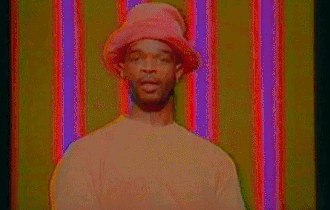
For the vocal arrangement, Jimmy Jam and Terry Lewis ensured they – and the slew of remixers who reinterpreted the song – had plenty to work with. There are ad-libs from Janet Jackson and Luther Vandross threaded dynamically throughout, whether during the main body of the song, such as the pre-chorus: “No more than you’re willin’ to give (yeah, yeah), ‘cos you won’t pay nothin’ for this good lovin’ (alright) it’s for free, and I won’t make you promises (uh, uh), I’ll just do all I can, to be your lover ‘cos I understand”, or simply punctuating those sections: “Now, Janet (ooh, Luther)”. Each of the mixes uses the vocal track slightly differently; the Classic 7” Mix, for example, retains Luther Vandross’s spoken breakdown: “Uh, hold it, hold it, wait a minute, I still don’t think they got it, let’s tell ’em one more time, check it out…” to denote the song’s finale, while it’s omitted entirely from CJ’s UK 7” Mix. None of the remixes significantly change the broad structure of The Best Things In Life Are Free. However, they’re each able to forge a unique identity due to how they use the amount of source material laid down by Janet Jackson and Luther Vandross, which is another reason different versions of the song work so well.

The Best Things In Life Are Free also features a guest appearance from the R&B/rap trio Bell Biv DeVoe (BBD), although only two members – Michael Bivins and Ronnie DeVoe – provide vocals. Their rap interlude is woven into the song with an introduction by Janet Jackson (“BBD tell ’em ’bout free”) and builds on the overall theme: “Material, imperial, so get the info, you know I know, it’s not about the dough, so baby, baby if you wanna be my lady, I’ll forget the riches and the other itches”. The most effective part, though, is where BBD namecheck the movie and everyone on the track: “Mo’ money, mo’ money, Jam and Lewis, here we go; mo’ money, mo’ money, Luther, Janet, here we go; mo’ money, mo’ money, Biv, DeVoe, here we go; mo’ money, mo’ money, Ralph T, speak…”. It concludes with the final act – Ralph Tresvant – making his sole contribution of one line: “…The best things in life are for free”. That might seem random, but he also has a song on the soundtrack (Money Can’t Buy You Love), and thus, the whole rap section underlines Jimmy Jam and Terry Lewis’s prowess. The duo weren’t simply pulling together a collection of songs to accompany Mo’ Money. This was a collaborative project between them and the artists to create music that existed for and because of the film.
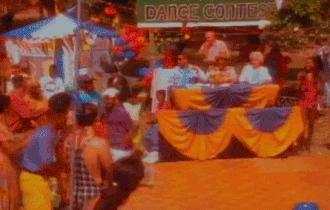
That sentiment remains at the heart of The Best Things In Life Are Free, and nowhere is it more celebrated than the chorus: “The best things in life are free, now that I’ve discovered what you mean to me, the best things in life are free, now that we’ve got each other, the best things in life are free”. The way Luther Vandross and Janet Jackson’s voices harmonise fills the track with uplifting positivity, while the melody is so sweetly crafted that the song can – and does – deploy the refrain repeatedly without ever losing its appeal. It was a little surprise, then, that The Best Things In Life Are Free was so warmly received as part of the Mo’ Money soundtrack and enjoyed success far beyond that in its own right.
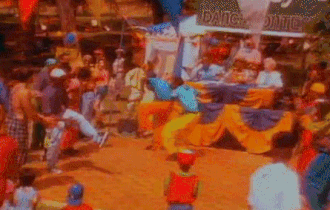
Neither Luther Vandross nor Janet Jackson appear in the music video, which is set at a bustling fairground. Instead, Damon Wayans and Stacey Dash take their place, which ties the visuals neatly into Mo’ Money (as do clips of the movie). There’s also a concerted effort to ensure The Best Things In Life Are Free doesn’t end up being an incidental musical overlay by using the location creatively. A make-your-own-video tent leads to sequences with Damon Wayans and Stacey Dash convincingly lip-syncing to the track, while a sign advertising the ‘Mo’ Money dance contest’ introduces several different styles of choreography that complement the energy of the song. A hazy, pastel aesthetic completes the halcyon early ‘90s, carefree vibe of The Best Things In Life Are Free. The video is busy, compensating well for Luther Vandross and Janet Jackson’s absence. However, it does mean that their collaboration lacks any direct visual reference point since they don’t appear on the single artwork (only Janet Jackson is pictured on the 1995 re-release) and never performed the song together live. In hindsight, that does feel like an omission.

In America, The Best Things In Life Are Free made an immediate impact at radio, but it seemed to catch Perspective Records by surprise. A delay in confirming the commercial release date of the single – which was required for songs to enter the Billboard Hot 100 at that point – made it ineligible to chart. That was quickly remedied, and the track ascended to reach #10. Yet, even then, The Best Things In Life Are Free’s success remained less than the sum of its parts, becoming Janet Jackson’s lowest peak since The Pleasure Principle reached #14 in 1987. And, while Luther Vandross’s chart presence wasn’t as dominating, he had, nonetheless, scored three bigger hits during the same period. Yet, in some respects, this feels symptomatic of the logistical context surrounding the single more than anything else.

It’s not to suggest that anyone associated with The Best Things In Life Are Free didn’t want the song to do well. However, because so many labels with different priorities were involved, there wasn’t necessarily a concerted push between them all. Janet Jackson had recently signed a record-breaking deal with Virgin but was yet to release any material under them, so that was very much their focus. Luther Vandross appeared courtesy of Epic, whom he’d been with since the early-’80s, and Perspective Records handled the Mo’ Money soundtrack. If the single had been attached to one of Janet Jackson or Luther Vandross’s own projects, then there might’ve been more of an impetus to minimally support it with a music video where at least one of them appeared.
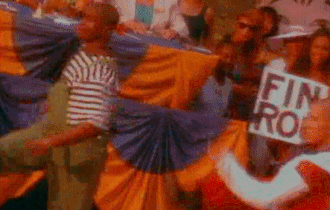
That’s even truer in the UK, where The Best Things In Life Are Free was a bigger hit still, both in terms of peak position – the track reached #2 – and also in the context of Janet Jackson and Luther Vandross’s respective careers. Janet Jackson hadn’t scored a top ten single since 1987 when Let’s Wait Awhile peaked at #3, and Luther Vandross’s most successful effort until this point was the 1989 re-release of Never Too Much, which reached #13 (to date, neither has improved on that peak, although Janet Jackson matched it in 1993 with That’s The Way Love Goes). The Best Things In Life Are Free, thus, represents a notable achievement for both acts; it topped the airplay chart and, with sales of 295,000 copies, was the 17th best-selling single of 1992.
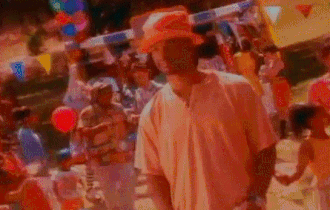
Indeed, so significant was The Best Things In Life Are Free that, in 1995, Janet Jackson released a remixed version – the K-Klass 7” Mix – of the track in the UK alongside her Design Of A Decade: 1986 – 1996 compilation. Although still jointly credited with Luther Vandross, she featured solely on the single artwork, and one of the CDs included a seven-song megamix of some of her biggest hits. The Best Things In Life Are Free returned to the top ten, peaking at #7. That’s despite a lack of promotion (though Design Of A Decade: 1986 – 1996 was heavily marketed) and the same music video being used, which demonstrates the song’s immense popularity. It’s remained so, as well; The Best Things In Life Are Free is Janet Jackson’s second-biggest selling single in the UK – behind Together Again – with total sales of more than 450,000 copies.
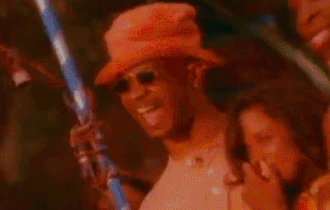
The fact that the song has endured so well despite never being actively promoted – other than indirectly through the Mo’ Money soundtrack in 1992 – is a testament to its appeal. Furthermore, the volume and diversity of the remixes released in different territories also reflect the quality of Jimmy Jam and Terry Lewis’s original composition. The Best Things In Life Are Free is a classic for a reason, so much so that it’s quite surprising how almost every aspect of the single exists as a side-project with minimal involvement from Luther Vandross and Janet Jackson.



